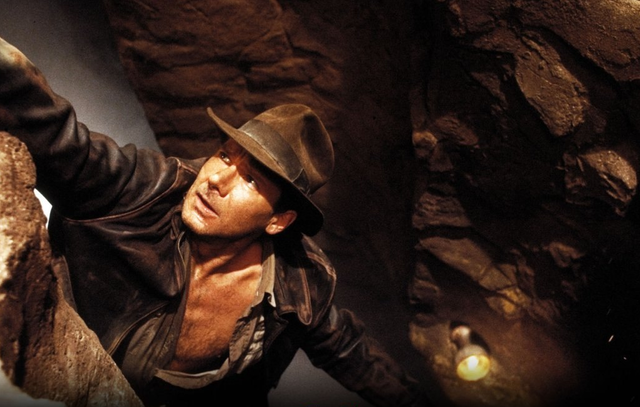The Middle Stone Age in Southern Africa : The emergence of anatomically correct modern humans
The Middle Stone Age in Southern Africa : The emergence of anatomically correct modern humans

Introduction

Originally, the term MSA was proposed by Goodwin to cover and include those industries which were neither Early nor Late Stone Age, but which were stratigraphically between the two. Technically. the MSA was considered intermediate between the Early and Late Stone Age industries. Typically MSA implements are flakes which tend to have convergent, rather than parallel, dorsal scars. The MSA was also characterized by the absence of true core tools. The MSA was thought to include a number of "industries", such as the Glen Grey and Still Bay Industries and the Pietersburg. Howiesons Poort, Mossel Bay and corresponding "variations". The refined prepared striking-platform technique is found in all these variants and, where secondary trimming does occur, it is probably achieved by pressure flaking. MSA artefacts have faceted rather than flat striking platforms. Please note that this description does not cover all the typological variations found within the MSA stone artefacts assemblages.
After Goodwin, subsequent researchers used the term MSA in a less restricted sense to include flake and/or blade-dominated assemblages which lay stratigraphically between Early and Later Stone Age assemblages.
It is now recognized that the three major chronological divisions for the Stone Age, that is, The Early, Middle and Late Stone Age, covered a longer period of time than was previously assumed. Broadly speaking, the Middle Stone Age (MSA) lasted from approximately 250/200 000 to 25/20 000 years ago, a time span which includes the Early Upper Pleistocene.
By the beginning of the Upper Pleistocene, people were producing a variety of MSA tools and almost the whole of Africa was inhabited. This indicates that there was a substantial population increase. Modern humans forms dating to more than 100 000 years ago have been recovered from a few sites in Southern Africa. Our knowledge and understanding of the origins and early behavior of these anatomically modern humans depends largely on our understanding of MSA archaeology in Southern Africa.
The final stages of the Pleistocene seem to have been a time of substantial changes in climate, the emergence of anatomically modern humans and the introduction of major cultural innovations. Lower temperatures and wetter conditions resulted in vegetation changes. Environmental changes probably triggered adaptation mechanisms in humans,compelling them to move into and exploit a wide variety of habitats. Specialized toolkits start to emerge, which probably indicate specialization in other areas as well.
Artefacts assemblages reveal certain differences between sites, as well as between industrial complexes, which implies some cultural differentiation. In most instances where there are obvious differences between assemblages, they often the result of the availability and choice of raw materials. The MSA in Southern Africa is complex and not yet fully understood, partly because of a lack of preservation of other than lithic (ie : stone) material at most MSA sites. A growing number of MSA sites show preservation of organic materials such as Strathalan near Maclear at the foothills of Drakensburg, Sibudu Cave in KwaZulu-Natal, Klasies River Mouth in the South-Western Cape, Blombos in the Southern Cape and Olieboomspoort in the Limpopo Province, these sites will add greatly to our knowledge of the MSA.
Most of the current data do indicate that the earliest modern Homo Sapiens fossils originate from Africa. The fossil record depends on the precise dating of the fossils and their provenance are still being debated. Problems with the dating, provenance and interpretation of the finds will only be resolved as more evidence comes to light.
The emergence of anatomically correct modern humans

The MSA is a particularly important period in the development and emergence of anatomically correct modern humans. The following are approximate dates for the settlement of the world by modern humans beings:
~ The African human fossils material includes Klasies River Mouth on the Southern Cape Coast and Omo in Ethiopia which both date to about 120 000 - 80 000 years ago. The provenance of the Border Cave skull is problematic - the skull may be younger. A human phalanx and a tooth were recovered from a hyena den at Sea Harvest, Western Cape.
The assemblages of MSA fossils from Klasies River Mouth comprise a number of mandibles, cranial pieces, teeth and post - cranial bones. the dating, provenance and the morphological aspects of the above fossils, especially those from Klasies Ricer Mouth and Border Cave, feature prominently in arguments about the origins of modern humans. The robustness of some of the Klasies River Mouth fossils is puzzling when compared with the gracility of the other specimens. This is noticeable in measurements on teeth, mandibles and areas of the face and cranial vault. However, these features fall within the range of variations of modern humans. Robustness may be the result of sexual dimorphism, the gracile specimens being female.
Part of an adult cranial vault, 2 mandibles (1 partial and 1 nearly complete), some post-cranial fragments and a nearly complete skeleton of a 4 to 6 months old infant were recovered from Border Cave. The provenance of the Border Cave fossils is not very sound and their age much debated.
Human footprints more than 100 000 years old were preserved in sand dunes at Langebaan, Western Cape. The date for the sandstone is around 120 000 (with a possible error of about 8%). This date coincides with the appearance of modern human anatomy in southern Africa. The trackway consists of three footprints of a small individual who walked in wet sand on the lagoon shore. Windblown dry sand subsequently covered the footprints and the calcium-rich sediment formed the concrete-like sandstone that preserved the footprints.
~ The hypothesis that anatomically modern people developed from a single African population led to much theorizing. Did modern humans then spread by migration and replace or assimilate archaic people elsewhere? Or did they develop as a result of simultaneous multi-regional evolution?
~ Modern Homo Sapiens specimens found in the Near East may be older than the African forms, Dates of between 115 000 - 100 000 years ago have been assigned to these individuals. Some specimens are modern and others have certain archaic features.
~ At several sites in Central Europe the Homo Sapiens fossils display both Neandertal and modern human features, supporting the regional continuity hypothesis (from Neandertal to Modern). (Jurmain)
~ Anatomically modern humans from western Europe are well known and date to 40 000 years or more. Eight individuals of Homo sapiens were discovered in 1868 in a rock shelter in southern France, these individuals are known as Cro-Magnon. Some of these fossils display a mixture of modern and archaic traits.
~ Various localities in Asia are known and dated between 50 000 or more and 10 000 years ago.
~ The oldest gracile human fossils from Autralia date to at least 30 000 years ago. Certain archaic traits are, however, apparent in fossils that have been datedto 14 000 - 9000 years ago.
~ Early dates for human occupation of the New World (the Americas) are still controversial, but dates from more 15 000 to possibly more than 30 000 years ago have been postulated.
~ The evolution into anatomically modern humans did not always coincide with the technological advances and art innovations of the Upper Palaeolithic.
Thank you for reading
References: Deacon & Deacon
Haviland
Goodwin
Jurmain
Please Follow me for more on Archaeology and History.
Please check out my other posts related to The Early Stone age:
The Early Stone Age : Chronology and Adaptation
The Early Stone Age : The Industrial Complexes
The Early Stone Age : Physical types associated with it.
Thank you @foundation for this amazing SteemSTEM gif

Upvoted on behalf of the dropAhead Curation Team!
Your post will be Resteemed by @dropahead witness account of the dropAhead curation team!
Watch out for the #xx-votesplus tag!
By doing the above you will give us more STEEM POWER (SP) to give YOU more earnings next time.
Keep up the good work!
Most recent post: Moving #25_votes_plus to Discord
"Anatomically correct"... Good one. It's all in the eye of the beholder :-)
such a nice writing. I have interest in history, but I usually only read about the history of my town. so your writing really give me a nice information about the early human. thanks for sharing
Thank you much @hananan, I have read some your posts which I also truly enjoyed. You can feel free to join us in SteemSTEM chatroom on Steemitchat. Thank you so much for the support and great comment.
Pleasure is mine 😊
@zest Amazing job! Followed.
Thank you @oguz. Much appreciated!!!!!
Congratulations @zest! You have completed some achievement on Steemit and have been rewarded with new badge(s) :
Click on any badge to view your own Board of Honor on SteemitBoard.
For more information about SteemitBoard, click here
If you no longer want to receive notifications, reply to this comment with the word
STOPCongratulations @zest! You have completed some achievement on Steemit and have been rewarded with new badge(s) :
Click on any badge to view your own Board of Honor on SteemitBoard.
For more information about SteemitBoard, click here
If you no longer want to receive notifications, reply to this comment with the word
STOPCongratulations @zest! You have completed some achievement on Steemit and have been rewarded with new badge(s) :
Click on any badge to view your own Board of Honor on SteemitBoard.
For more information about SteemitBoard, click here
If you no longer want to receive notifications, reply to this comment with the word
STOP